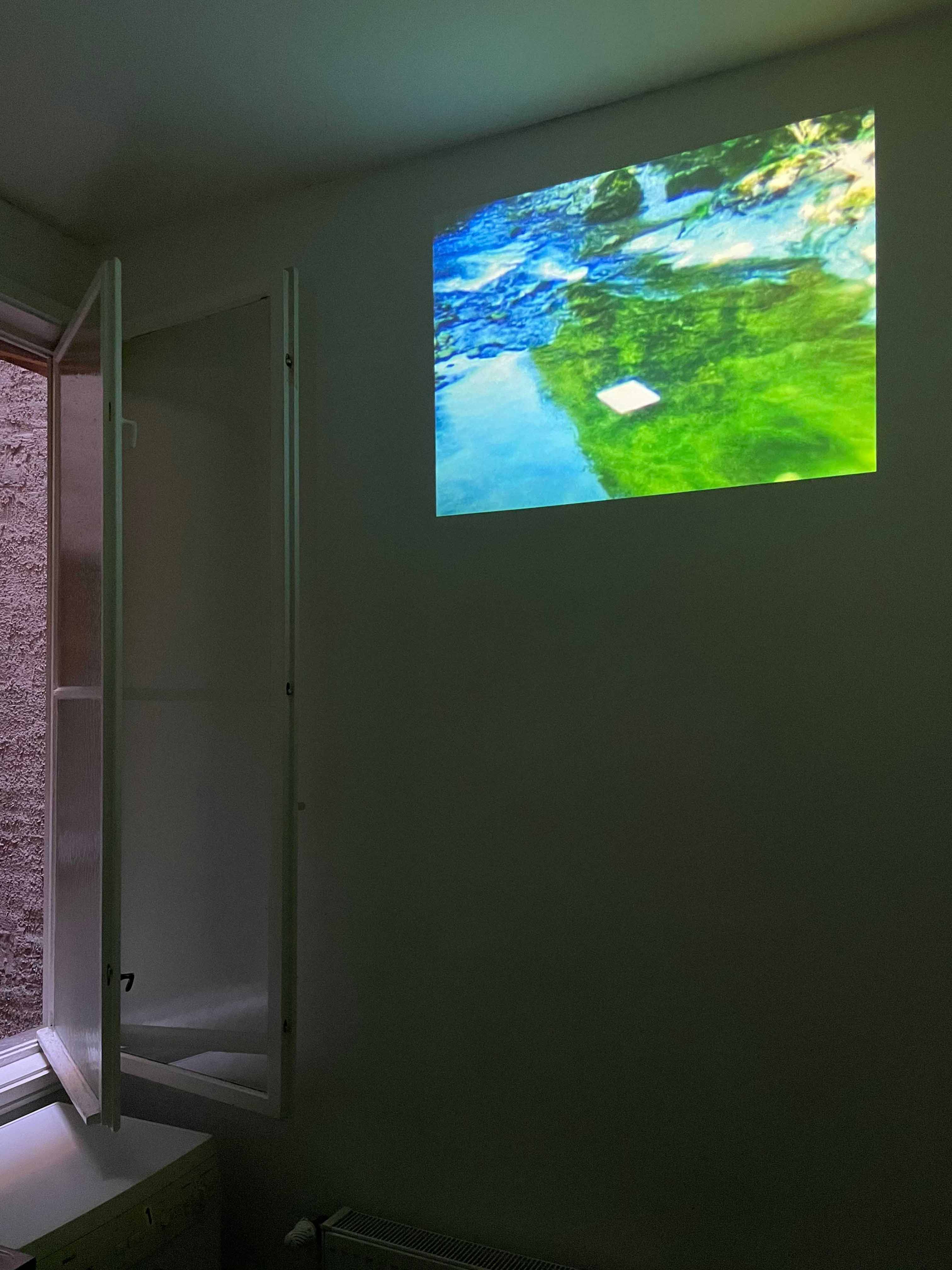
Ketuta Alexi-Meskhishvili
Cyprien Gaillard
Natascha Goldenberg
Oliver Helbig
Uğur Özbay
Roman Signer
Opening
Friday 4th of June 2021
5 – 9 pm
until 31st of July 2021
by appointment
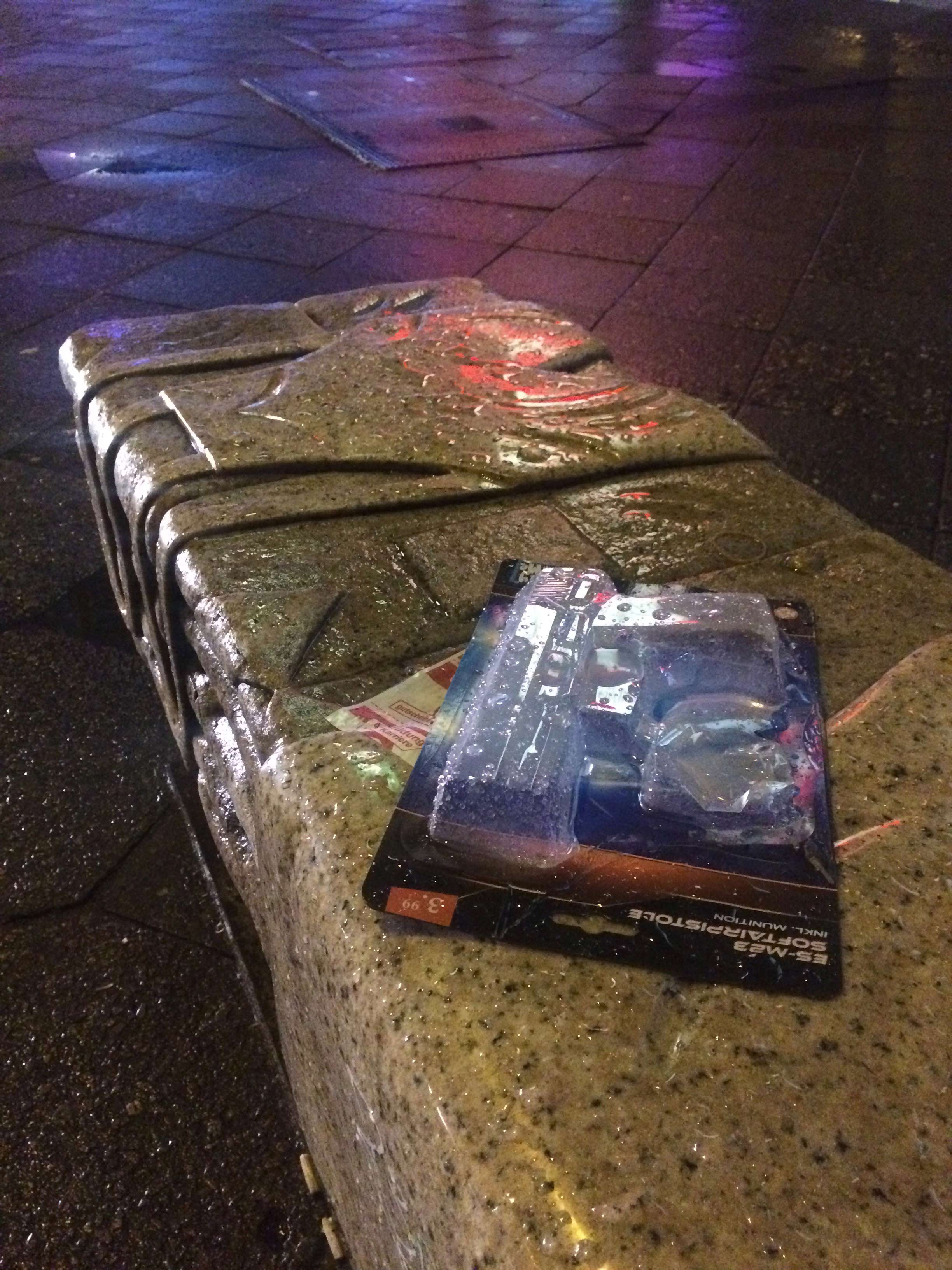
Kleiderbank Uğur Özbay (2007)
photographed by Cyprien Gaillard
IN A DEAD HEAT FOR COLD CASH AND BUXOM BABES
Die Pandemie bringt unsere direkte Umgebung scharf in den Fokus. Vor Woolworth, Potsdamer Straße Ecke Kurfürstenstraße, steht ein Kunstwerk von Uğur Özbay (1958 – 2016) im öffentlichen Raum.
Vom Erkerfenster der Wohnung ist diese Granitbank (Kleiderbank, 2007) von Uğur Özbay auf der Straße zu sehen.
In der Ausstellung IN A DEAD HEAT FOR COLD CASH AND BUXOM BABES werden zwei Skulpturen aus dem Nachlass des Künstlers gezeigt. Diese sichtbare räumliche Verbindung zwischen den ausgestellten Werken und dem öffentlichen Kunstwerk im Freien eröffnet einen Dialog zwischen Innen und Außen. Der Titel der Gruppenausstellung bezieht sich auf die Gegend, die für Drogengeschäfte und Prostitution bekannt ist.
Gefördert von Stiftung Kunstfonds Neustart Kultur.
The pandemic sharply brings our direct surroundings into focus. In front of Woolworth, on the corner of Potsdamer Strasse and Kurfürstenstrasse, there is a sculpture by Uğur Özbay (1958 – 2016) in public space.
This granite bench (Kleiderbank, 2007) by Uğur Özbay can be seen from the oriel window of the apartment.
The exhibition IN A DEAD HEAT FOR COLD CASH AND BUXOM BABES shows two sculptures from the artist’s estate. This visible spatial link between the exhibited works and the public artwork outside opens a dialogue between interior and exterior. The title of the group exhibition refers to the area, which is known for drug deals and prostitution.
Funded by Stiftung Kunstfonds Neustart Kultur.


Uğur Özbay
Büchertürme, 2005-2006
Granite
42 x 22 x 22 cm
40 x 19 x 19 cm
Ketuta Alexi-Meskhishvili
How to photograph leaves, 2018
Archival pigment print
Edition(2) of 2 + 2 AP
101,5 x 82 cm

In the library, I sit at the desk in front of the windows so as not to lose myself in looking at people. To my left, a middle-aged man flips through the pages of a thick, bound thesis. To my right, another man, older, has stacked his desk with reference volumes, each marked with many post-it notes. A series of little boxes full of index cards is arrayed on the marble ledge beside him. But straight ahead is only the window and its view, the broad flat horizon line with intermittent architectures.
Every now and then, at seemingly random points throughout the day, the louvred blinds across the west-facing bank of windows to my left are suddenly set into motion. They turn in a concertinaed swivelling, to shut light out or let it in. The blinds on the windows straight ahead of me open, and, when I look out, I see a BMX rider in front of the New National Gallery. He is turning his silver wheels in pirouettes against the grey stone, the glass walls, the flat grey sky. Glinting in the overcast light, their graceful revolutions are reflected in the gallery’s plate glass walls.
Later, the dusk sets in and the library feels even more enclosed, an entirely hermetic space cut off
Kirsty Bell, Boiled Language, Ketuta Alexi-Meskhishvili, 2020 Kona Books, page 19


Cyprien Gaillard
Bench, 2020
Amaranth wood, painted steel
44,5 x 30 x 244 cm
Cyprien developed this bench originally for the spaces where his films are being projected, offering a seat to the visitors. The bench as his contribution to the exhibition here is an invitation to conversation. Being in use since the opening party the top of the bench carries some records of real life.
Amaranth wood is called Purple Heart. The heartwood is light brown after being cut and changes color to violet purple when exposed to light. The wood travelled all the way from the northeast of South America.


Oliver Helbig
o.T. (drive), 2015
C-print, mdf, aluminum, glass
Edition of 3 + 2 AP
84,5 x 59 cm
The area around Kurfürstenstraße, in which prostitution takes place, is central; situated south of Potsdamer Platz, near Tiergarten park and the embassies, and east to City-West, where Wittenbergplatz, KadeWe and Kurfürstendamm is. The quarter crosses the border between two administrative districts, Tempelhof-Schöneberg and Mitte. It goes right through or along Kurfürstenstraße. Both districts act independently and do not have a common concept regarding the district-crossing street prostitution.
The quarters contain a rather heterogeneous structural and urban structure with old buildings from Gründerzeit and newer buildings from the 1970s and 80s. There was high fluctuation in Tiergarten Süd. Half of the residents left and moved here in the 1990s. Kurfürstenstraße and its neighborhood has been subject to major changes for a number of years now. A lot is being demolished and new condominiums are being built. The two districts have a fairly high proportion of families with children and a relative amount of Kindergartens and schools. The proportion of young people as well as the elderly is significantly higher than in comparable neighborhoods. Since 2019 Tiergarten-Süd is a so-called milieu protection area.

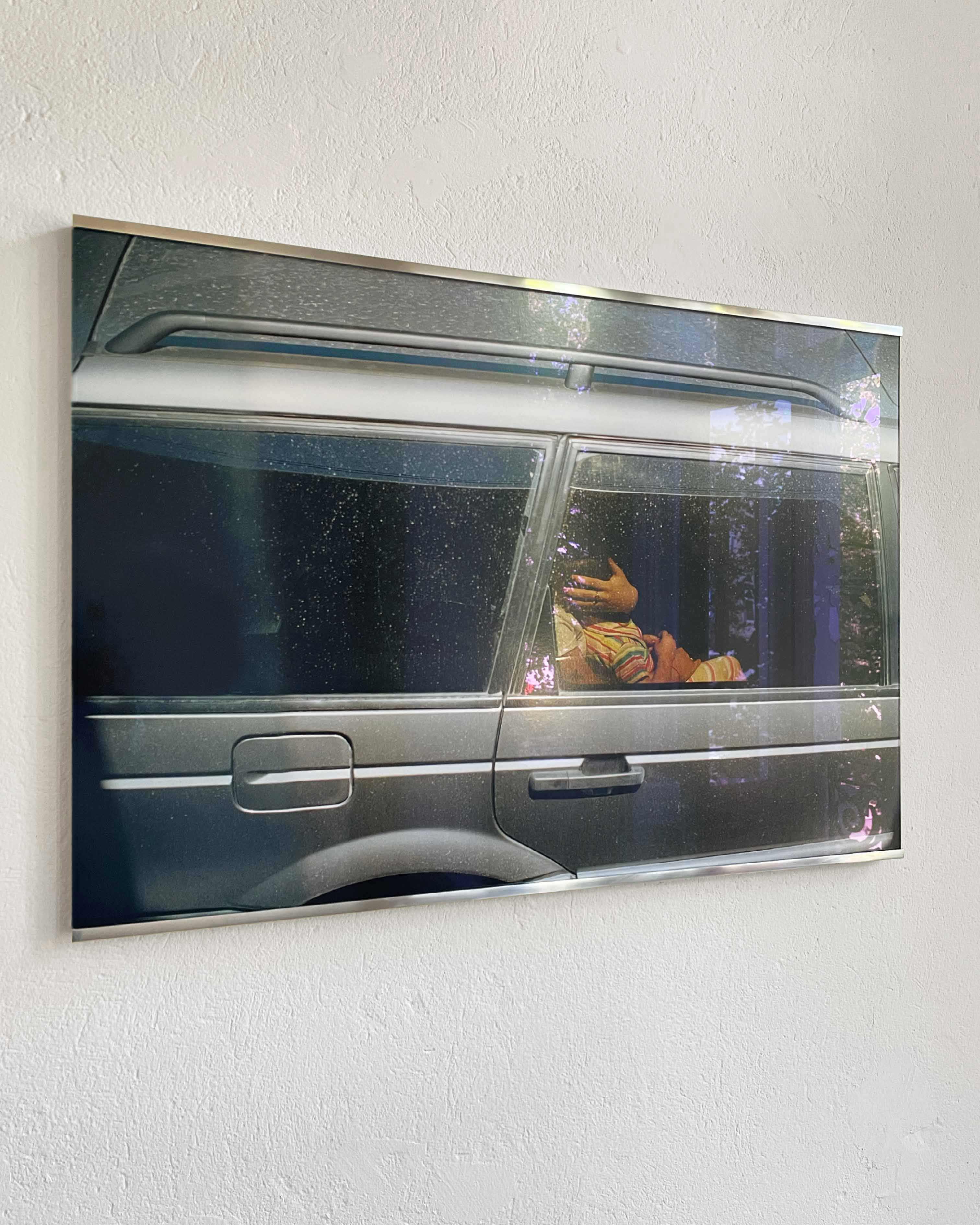
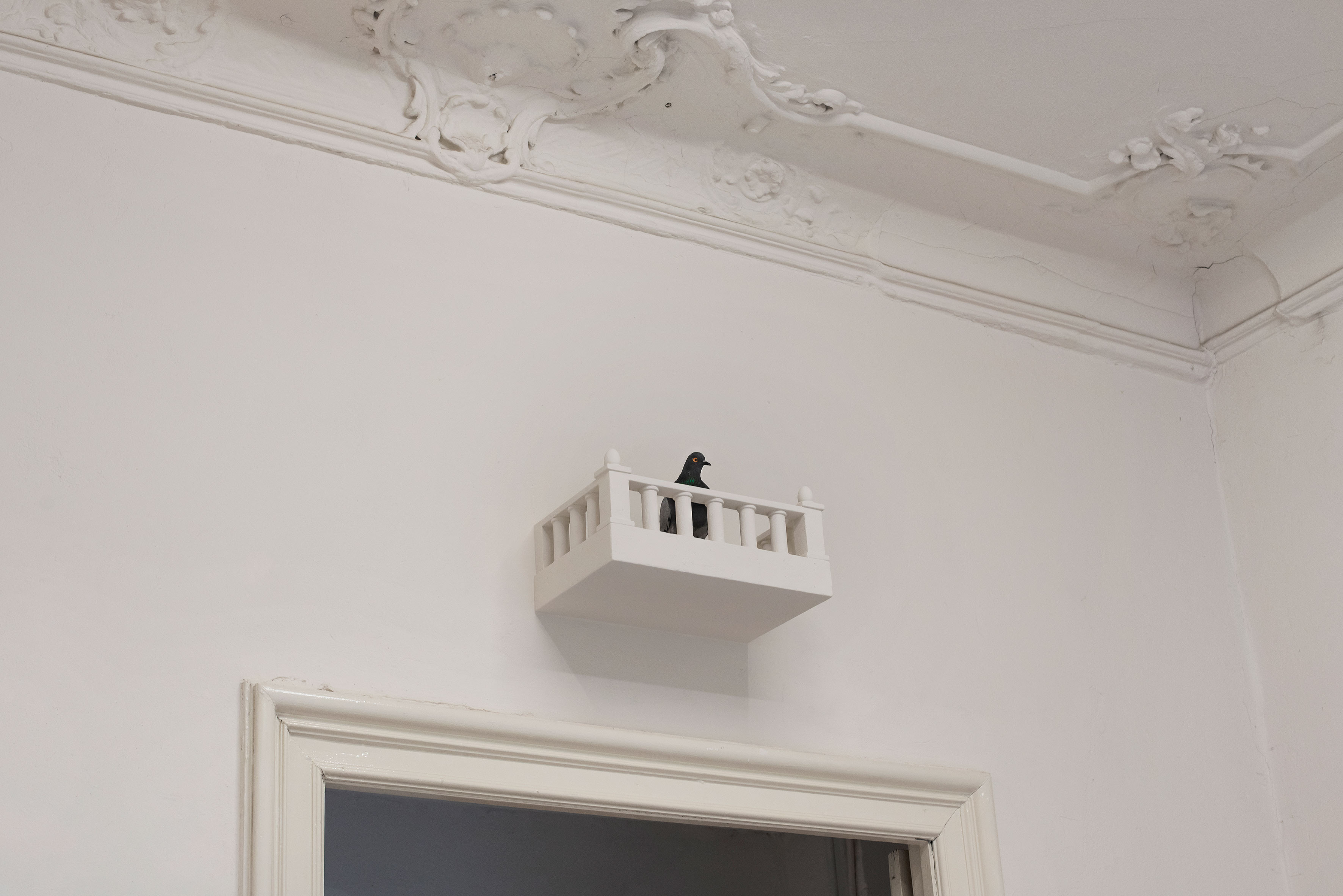
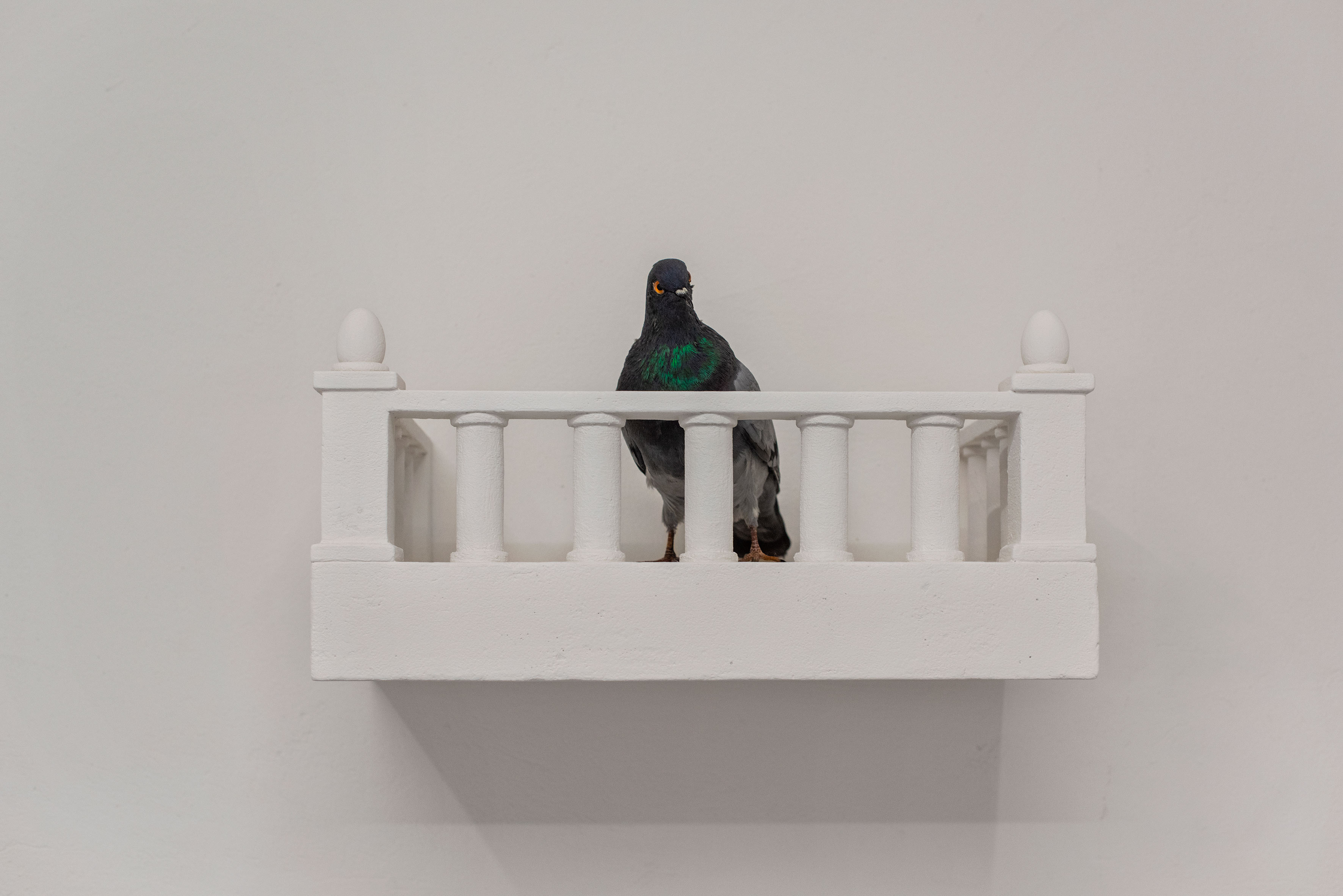
Natascha Goldenberg
The Balconator: Coo Coo, 2021
Wood, modelling paste, wall paint, stuffed pigeon
47 x 29 x 25 cm
The scene is the balcony itself, which projects beyond the façade of the brothel. The shutters, which face the audience, are closed. Suddenly, all the shutters open by themselves. The edge of the balcony is at the very edge of the footlights. Through the windows can be seen THE BISHOP, THE GENERAL, and THE JUDGE, who are getting ready. Finally, the French windows are flung wide open. The three men come out on the balcony. First THE BISHOP, then THE GENERAL, then THE JUDGE. They are followed by the Hero. Then comes THE QUEEN: MME IRMA, wearing a diadem on her brow and an ermine cloak. All the characters step forward and take their positions with great timidity. They are silent. They simply show themselves. All are of huge proportions, gigantic – except the Hero, that is, THE CHIEF OF POLICE – and are wearing their ceremonial garments, which are torn and dusty. Then, near them, but not on the balcony, appears the beggar. In a gentle voice, he cries out
The Balcony, play by Jean Genet, produced and published in 1956 as Le Balcon, Scene VIII


Uğur Özbay
Büchertürme, 2005-2006
Uğur Özbay
Sketchbook, 2010
46 x 16 cm
Sketch Kleiderbank (2007)

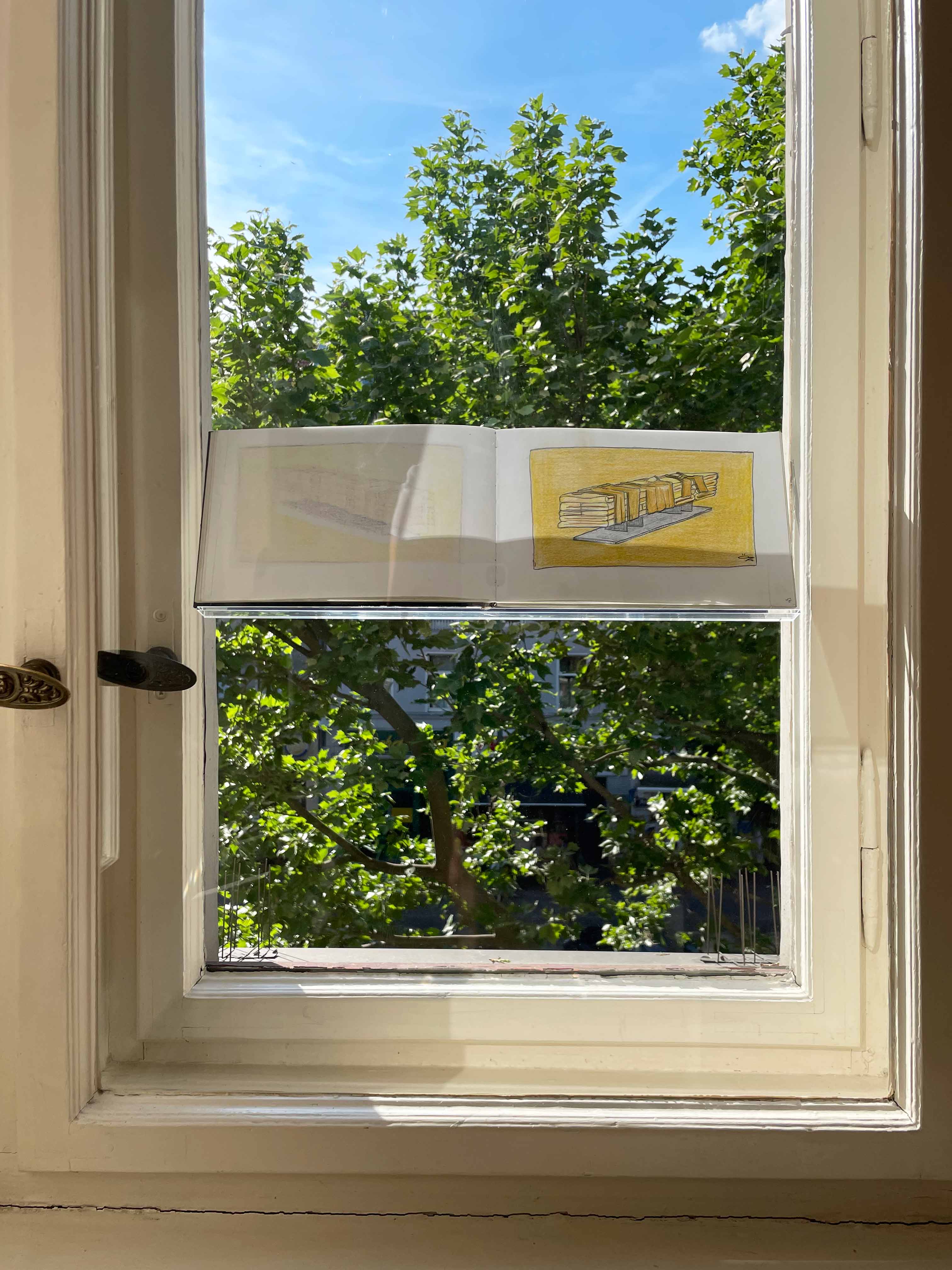

Roman Signer
Papier im Fluss (Paper in River), 1980
Super 8 mm film transferred onto video; colour, silent, 45 sec, loop
(Fluss Sitter, Appenzell)
